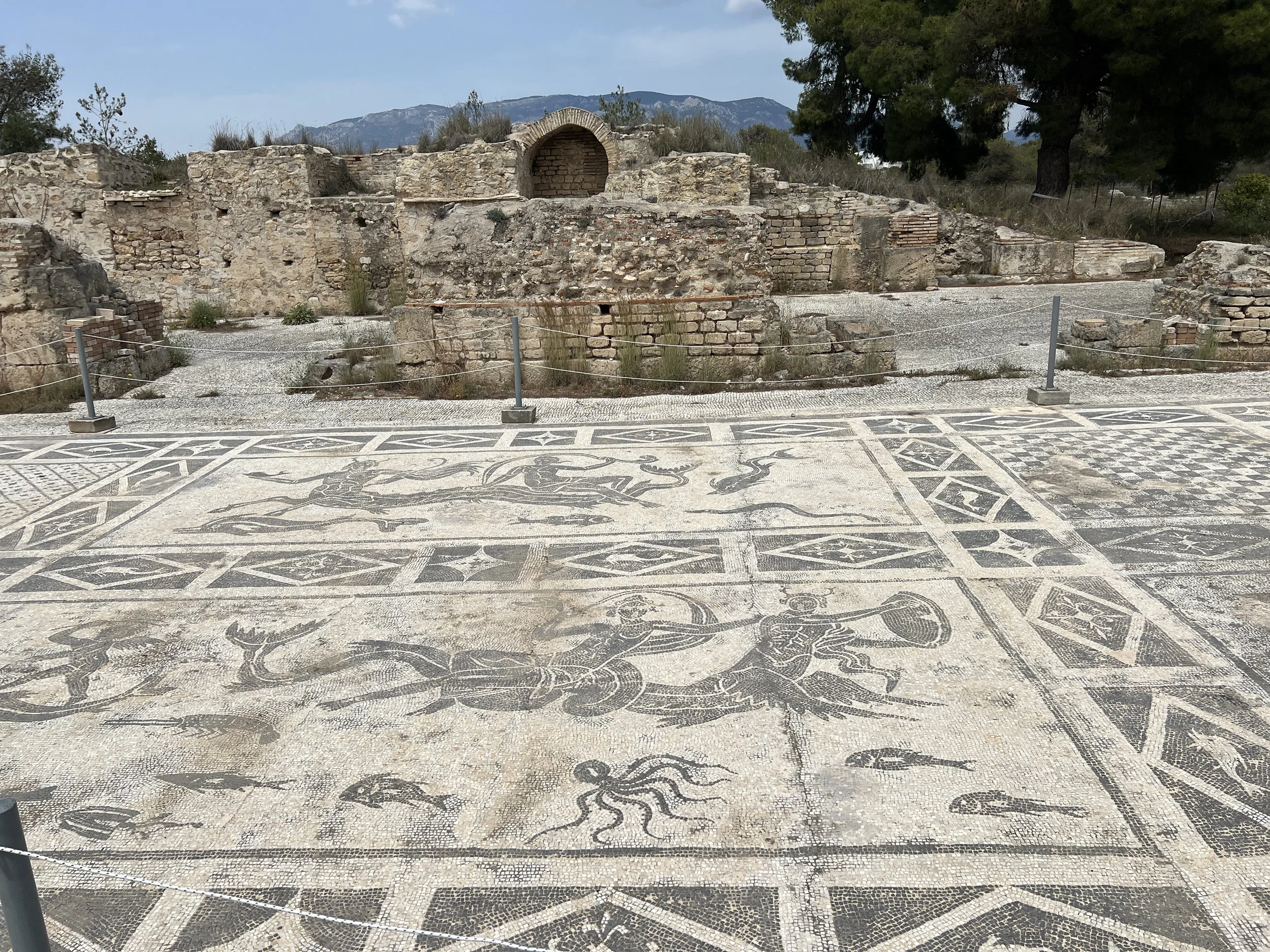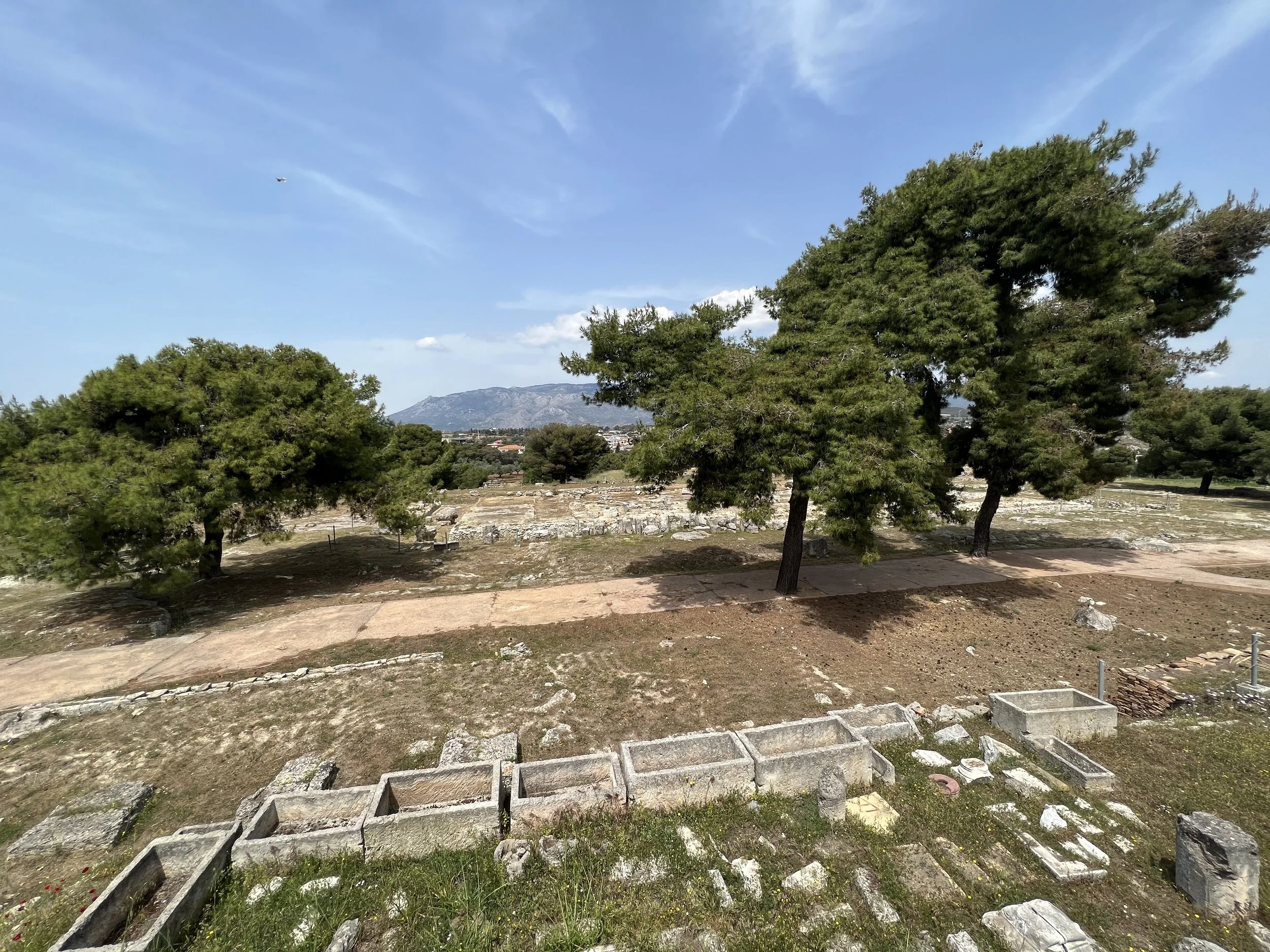Isthmia, Greece
“Do you not know that in a race all the runners run, but only one receives the prize? So run that you may obtain it. Every athlete exercises self-control in all things. They do it to receive a perishable wreath, but we an imperishable. So I do not run aimlessly; I do not box as one batting the air. But I discipline my body and keep it under control, lest after preaching to other I myself should be disqualified.” 1 Corinthians 9:24-27
The Apostle Paul used sports metaphors regularly in his letters to describe the Christian life of striving to put aside sin as a response to the victory won for us by Christ. No doubt these metaphors particularly struck a cord with the believers in Corinth where one of the most important semi annual games, the Isthmian Games, were held at the Sanctuary of Poseidon, Isthmia (near Corinth). The Isthmian games (sports, poetry, singing, horse racing, etc) were held in ancient times until 146 BC when the city of Corinth was destroyed by the Romans. In AD 40, after the Romans re-built the area, the Isthmian games came back to Corinth. Paul’s time in Corinth would likely have overlapped one of the games. The games brought people and business to the Corinth area and certainly would have provided work for leather workers / tent makers.
The archaeological site of Isthmia is a couple of miles south of the Corinth Canal. The Corinth Canal cuts a path across the Isthmus that connects mainland Greece with the Peloponnese. The canal is 4 miles long and too narrow for most modern vessels. The Canal was completed in 1893, but from ancient times it had been attempted. Including by Nero who used Jewish slaves to try and dig a canal - not possible until dynamite could cut through the bedrock. The alternative for the ancients was the Diolokos - a paved track over which goods and entire ships could be dragged from the east Aegean Sea through to the west side and the Gulf of Corinth connecting to the Adriatic and vise versa. A historian writing in 5th century BC gives the impression that the diolokos was ancient even at in the 400’s BC. It was used regularly until mid 1st century AD. Today there are two sections of the Diolokos unearthed at the west end of the Corinth Canal.
The remains of the Sanctuary of Poseidon at Isthmia date from the 700’s BC. It included temples to other pagan gods such as Cyclopes (Poseidon’s son). Remains excavated here include vessels and bones indicating sacrifices. The baths have restored mosaic floors depicting ocean creatures, Tritons carrying sea nymphs (nereids), and geometric designs. The remains of a starting gate mechanism (Hysplex) for a foot race are visible.
The small museum on site has on display colored glass mosaic panels depicting the near by port of Cenchreae as it was in the mid 4th century AD. There are statues depicting successful Isthmian game competitors in sport and musical competitions. Some inscriptions are on display from later Christian era around Corinth.
Sanctuary of Poseidon at Isthmia, Greece


























